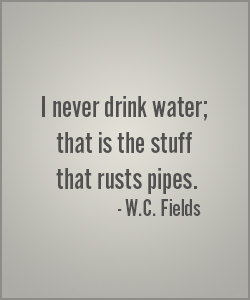Wine 101 – Understanding Wine

Buying Wine Need Not Be Tricky
I thought it was a good time for a modern wine primer as I have been getting loads of good beginner to intermediary questions lately. Brevity being the soul of wit I have kept my answer brief.
Know what you like; drink what you like. I know that this sounds trite but it really is that simple. Step one insists that you know what you like. The biggest problem that new wine drinkers have is not a lack of exposure to wines that they like it, is often a lack of memory. Trust me on this one as I have hours or perhaps weeks of stories involving consumers coming into a wine shop looking for the wine they had drunk and loved just days earlier. It goes something like this:
Wine clerk: Good afternoon, may I help you find something?
Customer: Yes, I was at that new Bistro the other night and I had the most wonderful wine with dinner. Do you have it?
Wine clerk: (eyes glazing over, concentrating on keeping hands at his side, and mercifully speechless.)
If you think that I am taking poetic license you would be mistaken. I have seen this scenario nearly word for word on numerous occasions.
Let technology work for you. Many of us carry in our pockets the equivalent computing power of Albania. If you can take a moment from your text messaging regiment you could record a memo that includes the wine’s name and vintage, as well as any thoughts or impressions that you have (regarding the wine). If you find the name to be too complicated ask to see the wine list, as chances are that the restaurant has listed all pertinent information. Still too much work? Ok, use that snazzy smartphone camera and snap a clear picture of the label. You will have to sift through compromising photos of your friends in order to find it later, but your wine clerk will thank you.
Once you have a small list of wines, mental or written that you enjoy you have the building blocks for learning and exploration. My best advice to all wine drinkers is to find a local store that has a committed wine/beverage staff. Often the staff you see stocking shelves and roaming the isles are walking wine data reservoirs. Let them know what you like and what you have not liked (which can be just as important) and allow them to make suggestions. These wine clerks are often passionate vino lovers who, as a condition of their vocation, try dozens of wines in a week’s time. Years ago when I worked the retail floor I had dozens of customers whose taste and preferences where burned in my memory. In some cases I knew what they liked better than they did suggesting wines that at first mention seemed odd but once tasted my intuition was confirmed.
Don’t Get in a Rut – Understanding Wine
A lot of people when discovering that they enjoy wine keep going back to the same brand or varietal such as Cabernet Sauvignon. With the assistance of your favorite wine merchant try wines that you have never seen before. You are living in a great time for wine discovery as consumers are offered a wider range of labels from virtually every wine growing region in the world. If you have come this far chances are that you are not the kind of person who could eat the same dinner night after night. Exploration is perhaps the most magnetic aspect of wine drinking. In addition, you are better armed for wine lists at restaurants you’ve never been to or picking up something on the fly for the BYO Thai spot your friends picked out.
Don’t Fear the Wine Label
Many wine drinkers avoid entire sections of the wine shop simply because they don’t know how to pronounce the names. Don’t fall in to this crowd as it is a horrible trap and your fear may keep you from discovering your favorite wine. Many US wine drinkers stick to New World wines due to insecurities that should simply be set aside. While learning to pronounce unfamiliar French, Italian, Spanish, or German names will take exposure and time, I can simplify the primary aspect of label reading.
New World wines are typically labeled by varietal (the grape, i.e. Chardonnay, Merlot and so on) while Old World (European) wines are typically labeled by place of origin. Why would they do this, you ask? The answer is tradition and to a large extent logic and agricultural concerns. Familiar names such as Bordeaux, Chianti, and Champagne are all places on the map. Those who know these wines know the grapes used to produce them. A place such as Chianti permits only a few grapes to be grown and insist on a prominence of one. The Old World point of view is that a specific track of land based on soil, slope, and climate is best suited to certain grapes and lousy for others. In many cases these varietals are native to the land. In the New World most producers see varietals as “brands” and plant according to this doctrine.
Now that you are on the way to knowing what you like, drink what you like and don’t let anyone get in your way!



